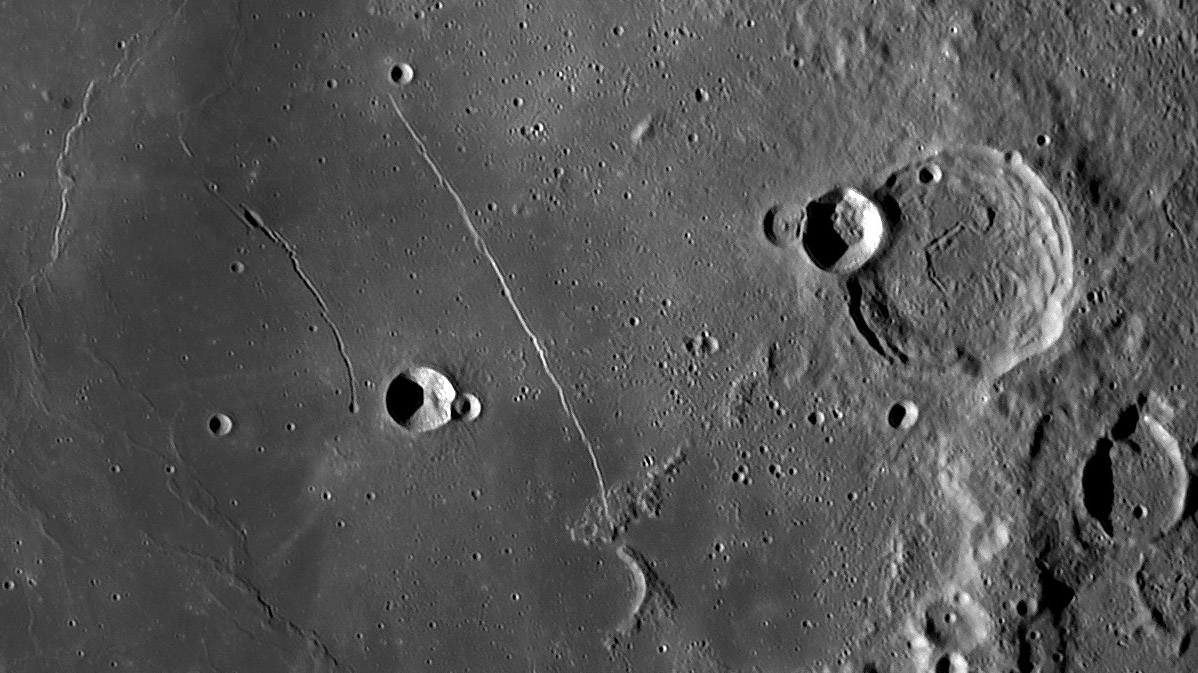August 20, 2009
Succession
image by Christian Arsidi, near Paris, France
For decades, French astrophotographers and imagers have been capturing superb high resolution views of the Moon, and Christian continues that tradition. Ignore the linear features in the middle and concentrate on the interiors of the pairs of overlapping craters. Near the center of the image is Birt and its rim- cutting companion Birt A. The interaction between these two rims is complex. The rim of A indents Birt's rim, and a mound of debris just east (right) of Birt's interior shadow is probably unconsolidated debris that was pushed westward, and hence downslope, when A formed. There was also pushback on A that moved a large piece of its rim partway into its crater - you can see that mound in Christian's image. Elger, the author of the classic 1895 book, The Moon, Chuck Wood
When I finished this LPOD I discovered that I had written a previous one on this same topic of rim interactions. When I start repeating myself maybe its time to stop! But maybe I can go on until I get it right, for in the 2006 LPOD I guessed that L might be younger!
Note added August 22 A previous LPOD with very low illumination angle shows the continuation of shadow that Elger referred to.
Daily French Lesson
12 août 2009 (~3-4 heurs UT) avec mon OTA Celestron 14, sur monture Takahashi EM 400, Barlow 2x, caméra Skynyx 2-1M; traitement avec Iris.
Related Links
Rükl plate 54
COMMENTS?
Click on this icon File:PostIcon.jpg at the upper right to post a comment.




